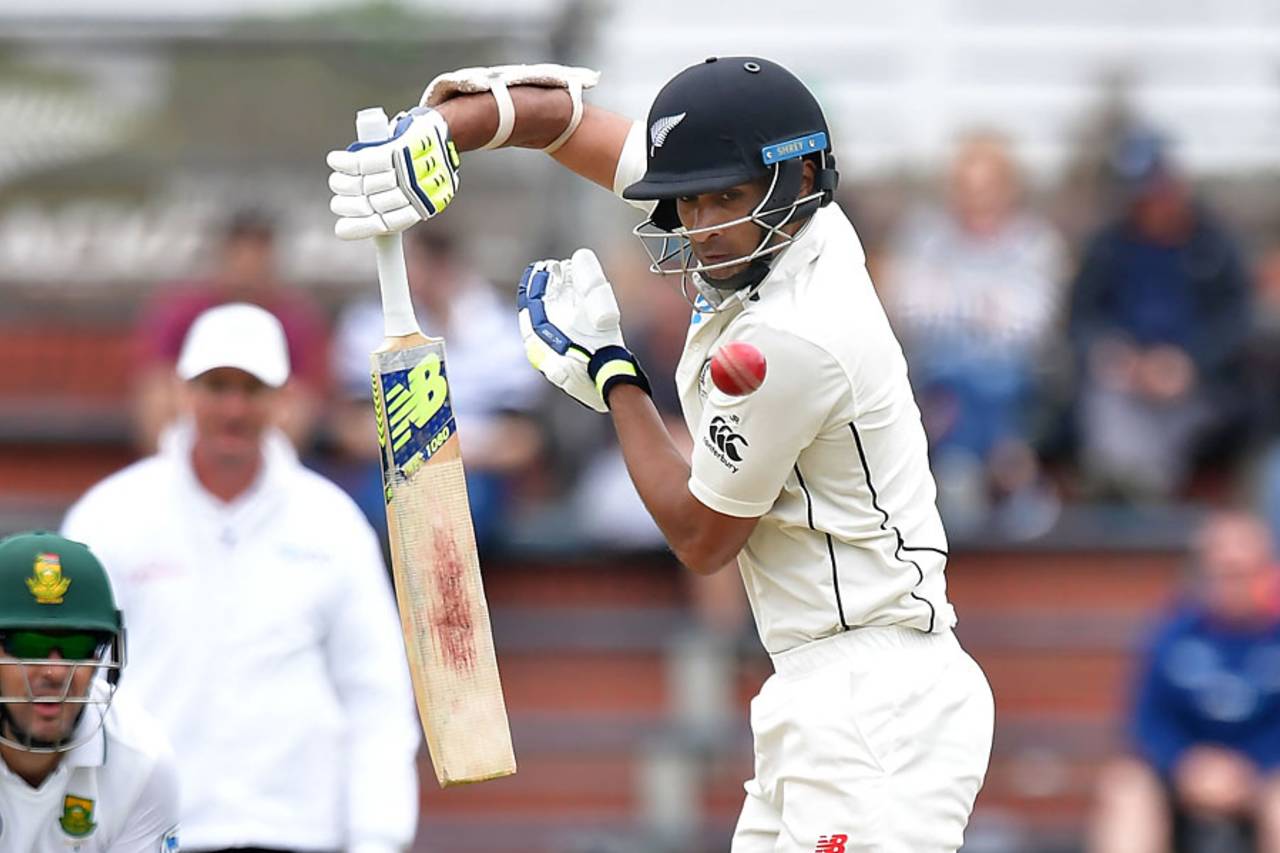Forget the ramp shot, the reverse sweep or the really, really late cut, the simple forward defensive is the stroke batsmen should be practicing ahead of the Hamilton Test. That should seem obvious, shouldn't it? This is the format for less flash, more focus, the format for a fight, yet so many batsmen seem to be losing it.
Both teams have problems in their top six, a result of their attacks being their stronger suits, but an issue that should not be insurmountable considering conditions. New Zealand surfaces do not offer bowlers so much assistance that there is trampoline bounce or sharp turn and the overheads, though cloudy, are not quite a sixties swing band.
Instead, slow scoring rates caused by naturally sluggish surfaces and accurate, intense bowling for long periods of time is the biggest challenge and both sides know that their chances of success in Hamilton depend on overcoming that. "They don't give you many bad balls and you have to work hard for your runs,"
Jeet Raval said of the South African attack. "It's about being strong in your game plans and sticking to it for long periods of time. Then you know the rewards will come later on in your innings. Sometimes you are forced to go for a period of time without scoring runs and that's what international cricket is about."
Raval has been New Zealand's stand-out example of how to do that. Even though he has not scored a century in the series, he has contributed on each of the three occasions he has been to the crease, mostly from a time perspective. Raval has not spent less than two hours at the crease in any of his three innings and batted for more than four hours in the second innings in Wellington. He has asked his team-mates to show the same staying power. "I don't think we need to change a whole lot of game plans, it's about being better for longer periods of time," he said. "We showed in the first Tests and bits of the second Test that we are good enough. We just need to be good enough for longer periods of time and we'll be able to square the series."
Apart from Raval's ability to stick around, he has also shown a technique which the rest can learn from. Raval is a careful, compact and confident player, who guards his offstump preciously and knows when to leave. Raval has erred once - against the spinner Keshav Maharaj when he pushed at a ball he expected to turn the over before lunch on the first day in Wellington, to give Hashim Amla a catch at slip - but he has not been caught fishing, a problem that runs through both line-ups.
Of the 58 wickets to have fallen across the first two Tests, 25 of them have been caught behind the stumps (wicketkeeper or slips). South Africa account for 10 of those dismissals, from the 28 they have which amounts to more than a third. Meanwhile, 15 New Zealand batsmen have nicked off, and considering they have only batted thrice this series, that's 50% of their wickets. Among the biggest culprits are those in the worst form - Stephen Cook (twice) and Tom Latham (three times) - which suggest that when batsmen are desperately searching for something, they often find the edge.
But that is not the only reason more and more Test cricketers are playing rashly and
Vernon Philander has a theory to explain. "When we play on flatter wickets, we don't concentrate on techniques anymore," Philander, who was talking as a batsman, said. "We just concentrate on where the head and where the feet are going. We could probably brush up on our techniques every now and again. Wickets are generally very good when you play Test cricket so I think batters are more focused on scoring runs than techniques."
For Philander the bowler, batsmen's preoccupation with keeping the scoreboard moving leaves more than enough room for him to tempt them outside off. Philander has built his career on bowling a fourth-stump line and moving the ball just enough to create doubt but that has not given him much this series. Although he has been bowling as well as ever, he has only two wickets to his name in this series but a return to the venue where he took 10
five years ago, may change that. Even if it doesn't, Philander doesn't mind too much. It's sort of the opposite of a batsman's block. Philander just keeps practicing how to probe and even if the results don't come for him, they will for someone else.
"There's always going to be different bowlers that shine in different Tests," he said. "The way Keshav (Maharaj) has come out and bowled has been phenomenal. The wickets are a touch on the slower side so it is a bit of an adjustment for us as seam bowlers."
